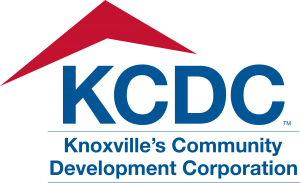This article originally appeared in the Knoxville Mercury on March 9, 2016.
by Joe Sullivan
A complete makeover of what’s long been Knoxville’s most rundown public housing project is finally getting underway. Construction of the first phase of a four-phase replacement of the Walter P. Taylor and Dr. Lee B. Williams homes in the Five Points area of East Knoxville is due to start next month.
Pursuant to a Five Points Area Revitalization Master Plan, some 330 new dwellings are slated to go up in the 33-acre site that once contained 500 barracks-like units. Erection of the new will be sequenced with demolition of the old to minimize dislocation of tenants. (Many former residents have already been relocated to other properties, most notably the nearby 85-unit Residences at Eastport, to clear the way for demolition of the 183 units that have already come down.)
Orchestrating all of this is Knoxville’s Community Development Corp., and it’s doing so at a time when funding for new public housing is much harder to come by than it was in the 1990s when KCDC got a $23 million federal grant to transform its drab College Homes housing project into the attractive Mechanicsville neighborhood that exists today.
With such grants a thing of the past, KCDC has had to take a slower, more circuitous route to getting funding for the Five Points Area Revitalization it’s striving to foster. That route involves the use of a longstanding provision of the federal tax code for what are known as Low Income Housing Tax Credits that are awarded annually to each state per a formula based on its population. In Tennessee, these tax credits are allocated to local housing authorities such as KCDC on a competitive basis by the Tennessee Housing Development Agency.
While $1.1 million is the most that can be allocated to a single project in a given year, these credits have a 10-year life. So when KCDC got such an allocation for Five Points in 2015, that added up to $11 million over 10 years for which a syndicate of investors was willing to pay 97 cents on the dollar in order to use the credits as offsets against their income taxes.
These proceeds will pay for nearly all of Phase 1 of the Five Points plan, which is a 90-unit apartment building for low-income senior citizens. The lustrous three-story building to be known as the Residences at Five Points is going on the footprint of a demolished part of the Dr. Lee B. Williams Senior Complex. When remaining Williams residents move in upon completion in 2017, they will be getting many amenities they didn’t have before. In addition to all-new energy efficient appliances, these include central air conditioning, a dishwasher, a meeting room with computer stations, and laundry facilities.
Construction of subsequent phases is contingent on THDA tax credit allocations that have yet to be awarded. But KCDC’s Executive Director, Art Cate, is “99 percent confident” of getting one this year and another in 2017. That will permit work to start on Phases 2 and 3 in 2017 and 2018 respectively.
Phase 2 will consist of 84 family units with from one to four bedrooms, spread among 10 new buildings on a previously demolished portion of the site. These will offer residents to be moved from Walter P. Taylor the same amenities as the senior apartments, along with a playground and a walking trail. A $3 million bank loan will supplement the tax-credit sales proceeds in covering its cost. In addition, the city of Knoxville has committed $2.5 million for streetwork adjoining the site. Bethel Avenue on its eastern perimeter, which is presently little more than an alley, will become a two-lane street with sidewalks, and Kenner Avenue will be extended.
Phase 2 has yet to be named, but each of the subsequent phases will get one. The name Walter P. Taylor, which has become synonymous with inner-city blight and crime in the minds of many, will be relegated to the history books.
Plans for Phases 3 and 4 are less concrete at this point. But Phase 3 will probably bear a lot of resemblance to Phase 2 while Phase 4 will likely put more emphasis on housing for seniors and the handicapped. Work on both these phases can only commence after their sites have been cleared by demolition following relocation of tenants from Williams and Taylor respectively upon completion of Phases 1 and 2.
Total cost of the Five Points Revitalization are expected to exceed $80 million. These also include the $14.5 million that went into the 85-unit Residences at Eastport that opened in 2012 on the nearby site of the former Eastport Elementary School. Much of that funding came from the massive federal stimulus program known as the American Recovery and Reinvestment Act (ARRA) during the Great Recession. But KCDC was also creative in tapping other sources of financing.
KCDC also deserves a lot of credit for its conduct of the planning process that led to the formulation of the Five Points Area Revitalization Plan. Numerous tenant input sessions and public forums preceded formation of a master plan team led by Johnson Architecture. And the 2014 master plan has been the subject of several subsequent workshops.
To be eligible for public housing, tenant household income can’t exceed 60 percent of the area median, and the rent can’t exceed 30 percent of income. KCDC has gained awards under a new federal Department of Housing and Urban Development program known as Rental Assistance Demonstration to cover the balance of its operating expenses.

